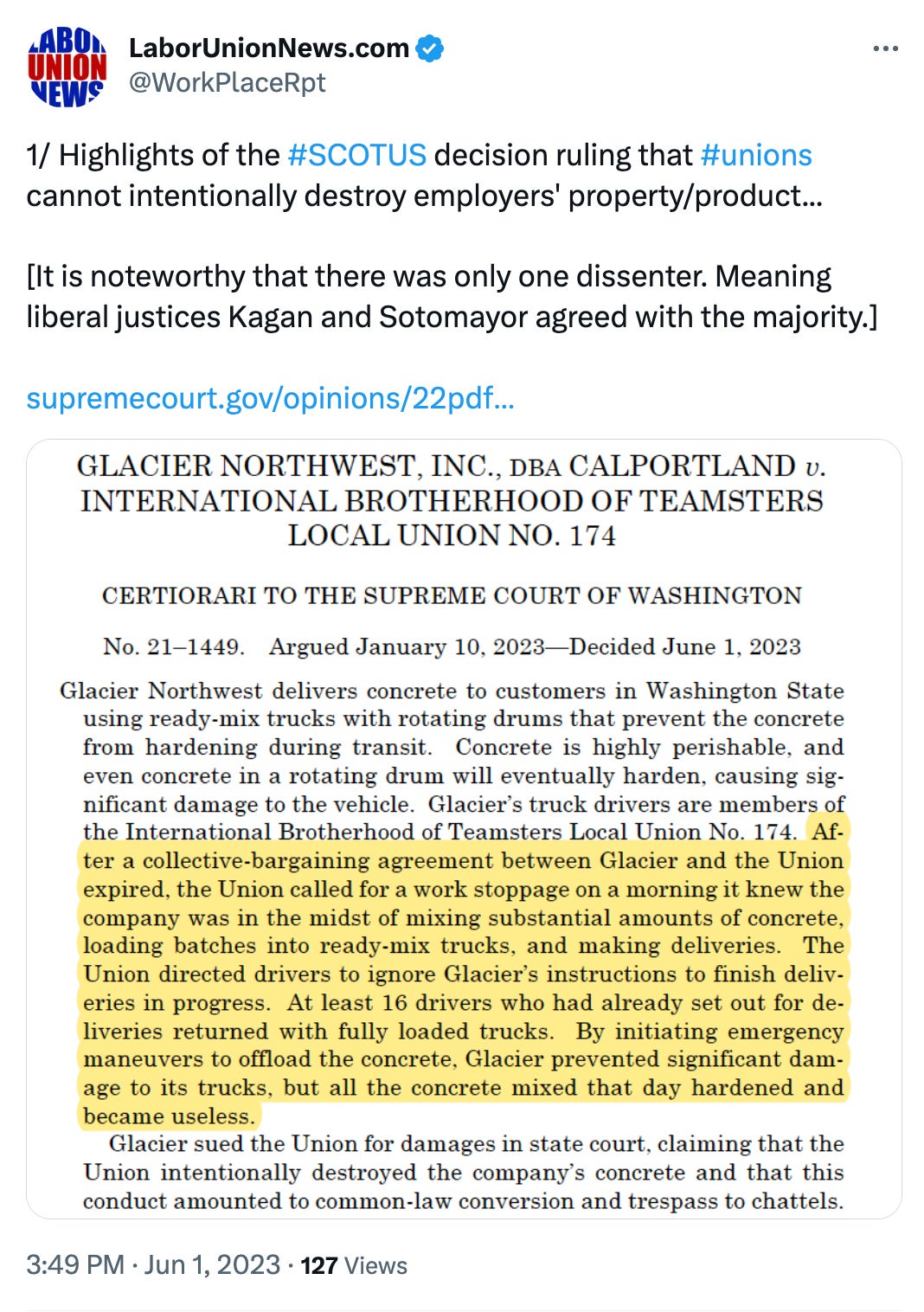The Supreme Court's Bi-Partisan Decision Leaves the Right to Strike "Intact"
Workers still have the Right to Strike. They do not, however, have the right to intentionally destroy property
With the issuance of the U.S. Supreme Court’s Glacier Northwest v. Teamsters decision (in PDF here) earlier today, there is already some hyperbole in pro-labor circles that the Supreme Court has “eroded the right to strike.”
However, notwithstanding the hyperbolic rhetoric from the Teamsters’ Sean O’Brien, some union stalwarts saw the decision for what is was—a limit to unions intentionally destroying employer property.
“We are pleased that today’s decision by the US Supreme Court in Glacier Northwest doesn’t change labor law and leaves the right to strike intact,” stated Mary Kay Henry, President of the Service Employees International Union (SEIU). [Emphasis added.]
For readers, the key to understanding what the decision is really about—a union’s intentional sabotage of property (e.g. product)—it helps to read the entire decision.
However, in lieu of reading the entire decision, here is a highlighted breakdown posted on Twitter earlier.
It is also noteworthy that the Court’s 8-1 majority decision also included “liberal” justices Kagan and Sotomayor.
Perhaps the best summary of the Court’s decision is from Labor Relations Institute’s Mike VanDervort, who wrote:
This decision clarifies that unions can be held liable for the intentional destruction of employer property during labor disputes, providing companies with a legal remedy for such actions. It also reinforces the idea that while unions have the right to strike and engage in collective bargaining, they must do so without compromising the safety and property of the employer.











